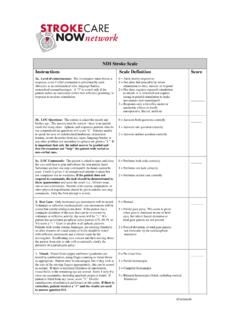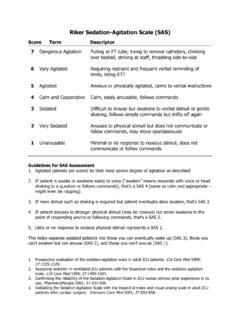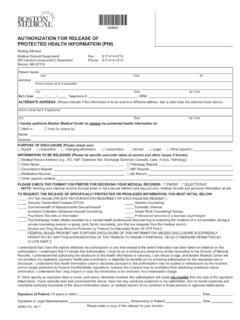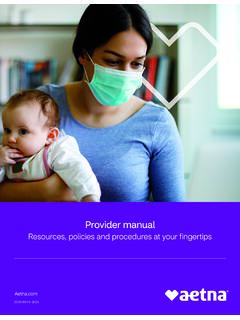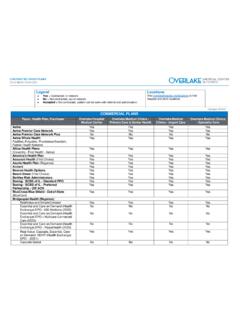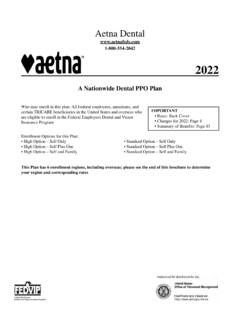Transcription of Understanding your health insurance card
1 Understanding your health insurance card : You should always keep your health insurance card in a safe, but accessible place. Most people carry their health insurance card in their wallet or purse. Your insurance ID card is like a passport or driver s license, it gives you access to care and coverage. Knowing what these common terms and abbreviations on insurance cards mean can help you speed through the forms you have to fill out at the doctor s office. Let s go through them together. Look at the example card and your own card . There should be similar parts. Name of the insured: If you are the policyholder your name will appear here.
2 If one of your family members is the main policyholder it will have their name above yours. Member ID Number: identifies you, the insured. Group number: Identifies your employer plan . Each employer choses a package for their employees based on price, or types of coverage. This is identified through the group number. If you purchased your insurance through the health exchange you might not have a group number. plan number: health insurance companies have many plan options. This tells you which one you re on. plan type/ plan name: There are many different kinds of insurance plans. Common types are HMO ( health Maintenance organization ), PPO ( preferred provider organization ), EPO (Exclusive provider organization ), and HDHP (High Deductible health plan ).
3 Payment information: Many health insurance cards show the amount you will pay (out-of-pocket) for common visits such as primary care, emergency, specialists. It is usually listed as a fixed rate, or copay, or as a percentage. Most co-pays are due at the time of visit. MassHealth is health insurance for some children and disabled adults, and low income people. There are different kinds of MassHealth, including: o Standard o Limited o Family Assistance Blue card : use this for vision and dental appointments Personalized card : such as BMC Healthnet plan , Tufts Family, Neighborhood Healthplan, or others, use this for doctors visits On the back of the card there is more useful information!
4 The number to call the insurance company if you have questions about your insurance coverage is there. Be sure to know the dates to renew or change your coverage. This time of the year when you can make changes is called Open enrollment. It is usually in the fall, though you may be able to make special changes at other times. If you have no insurance , be sure to sign up during open enrollment or you could pay a fine! Other things about health insurance : Learn the ins and outs of what is covered in your insurance handbook. When you sign up for insurance either through your job or through the health connector they will send you a handbook.
5 This handbook will describe what plan you have selected and what it covers. READ IT! Get familiar with your health insurance website. Take a moment and click through the website to see where handy information is. This is another place to find out what is covered in your insurance and what doctors accept your insurance . Update your insurance company if you have any significant changes such as address, phone number, or how much money you re making. If you have a question call them! They have people on staff to help and answer questions you might have. The number is usually on the back of your insurance card as well as on the website.
6 insurance companies don t pay unless something is medically necessary . Talk to your care team and insurance about why you need a medication, service, or equipment so they have a clear picture of what is needed and why it makes a difference in your health and quality of life. HDAP See if HDAP (HIV Drug Resistance Program) is something you need. It helps residents of Massachusetts pay for their HIV medication and monthly insurance premiums, if you have any. HDAP can help pay for Medication copays private health insurance premiums If you purchased a plan through the connector HIV-resistance testing (genotype and virtual phenotype lab tests) post-exposure prophylaxis (PEP) for potential non-occupational exposure to HIV; Pre-exposure prophylaxis (PrEP) if your non-HIV partner is interested Talk to your case manager if this is something you might qualify for Medical Bills Find ways to pay if your insurance doesn t.
7 Talk to patient financial services, the billing company, or the hospital. If you have medical bills plan a payment schedule. There are people that are there to help you.


